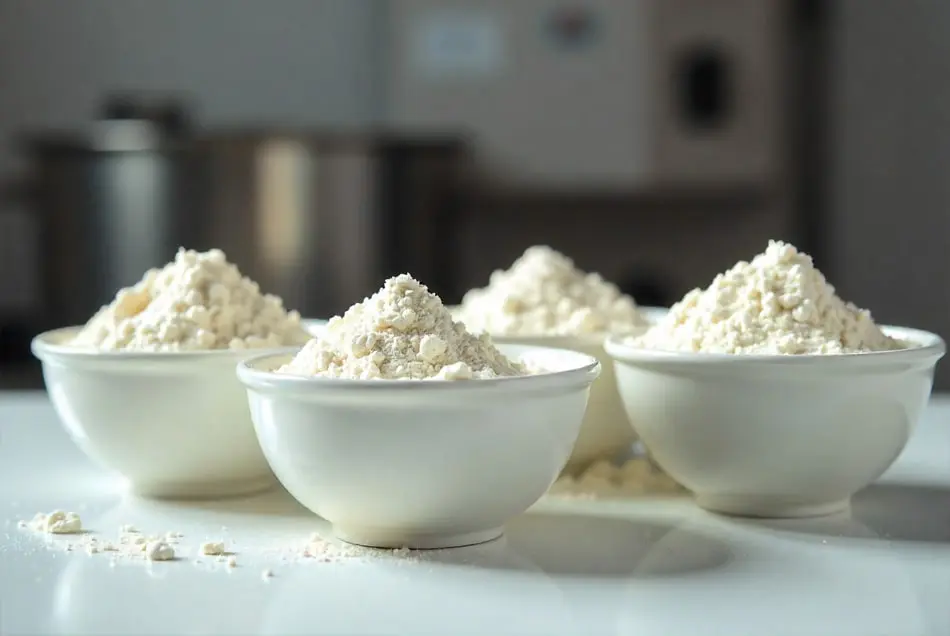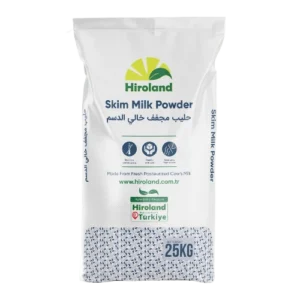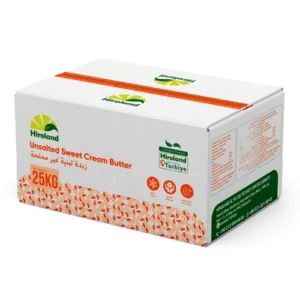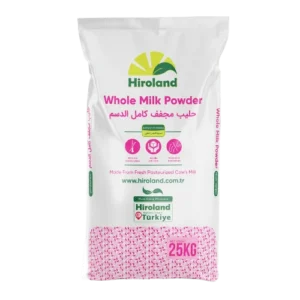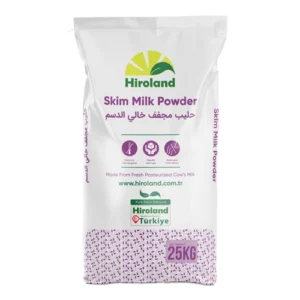Skim milk powder is essential in the dairy industry for its versatility, nutritional benefits, and long shelf life. This blog, differentiating skim milk powder by heat treatment categorizes it as low heat, medium heat, and high heat heat-stable SMP. Understanding these types is crucial for dairy professionals, food technologists, and anyone interested in dairy production.
Why skim Milk Powder?
Skim milk powder (SMP) is a vital ingredient in the dairy industry, known for its versatility, nutritional benefits, and long shelf life. Unlike whole milk powder, which contains approximately 26% fat, skim milk powder contains slightly more than 1% milk fat but more than 30% valuable milk protein. This blog explores the various types of skim milk powder, classified based on the level of heat treatment they undergo low heat skim milk powder, medium heat skim milk powder, and high heat, heat stable skim milk powder. Understanding these distinctions is crucial for dairy professionals, food technologists, and anyone interested in the intricate workings of dairy production.
Understanding Skim Milk Powder
Skim milk powder is derived from pasteurized skim milk through the processes of evaporation and spray drying. This results in a powdered form of milk that retains much of its nutritional value, including high levels of protein, vitamins, and minerals, while being low in fat. The removal of fat makes it an ideal ingredient for various food products, offering versatility and an extended shelf life.
Production Process
The production of skim milk powder involves several stages:
1. Separation: Fat is removed from the milk to produce skim milk.
2. Pasteurization: The skim milk is pasteurized to kill harmful bacteria.
3. Evaporation: Water content is reduced by heating the milk under vacuum.
4. Spray Drying: The concentrated milk is sprayed into a hot chamber, causing the remaining water to evaporate and leaving behind milk powder.
Importance of Heat Treatment
Heat treatment is a critical step in the production of skim milk powder, impacting its nutritional and functional properties. Different levels of heat treatment (low, medium, and high) affect the protein structure and solubility, influencing the powder’s suitability for various applications. The severity of heat treatment prior to evaporation significantly impacts the partitioning of milk components, rennet gelation, heat coagulation time (HCT), and ethanol stability (ES). While evaporation and drying stages have minimal influence on the characteristics of reconstituted milk, the level of heat treatment plays a crucial role in altering the properties of skim milk. Increasing the severity of heat treatment results in changes such as whey protein denaturation, casein micelle size, and reductions in serum calcium and phosphate concentrations, affecting the heat stability of high solids recombined milks.
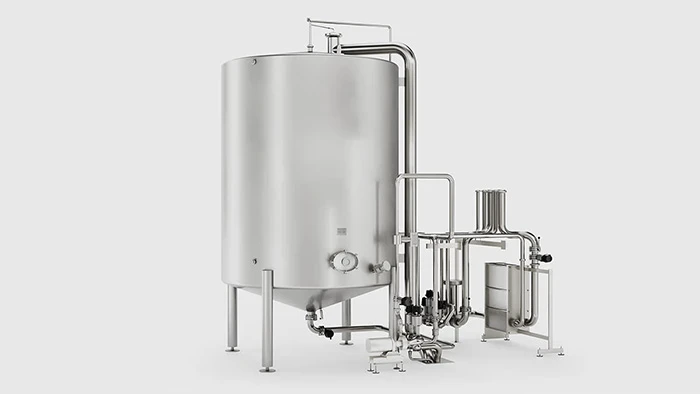
Effects on Nutritional and Functional Properties
• Nutritional Impact: Heat treatment can cause the denaturation of proteins and the loss of certain vitamins. However, it also enhances the safety and shelf life of the powder.
• Functional Impact: The solubility, emulsification, and water-binding capacities of the powder are modified by heat treatment, affecting how it interacts with other ingredients in food formulations.
Low Heat Skim Milk Powder
Low heat skim milk powder undergoes minimal heat treatment, preserving most of the original proteins in their native form. This type of powder is highly soluble and has excellent functional properties, making it suitable for applications requiring high-quality protein content. Low-heat skimmed milk powder is particularly suitable for recombining milk, which is then used for cheese production or for the production of fresh milk products such as yogurt or milk mix products, especially in countries with low milk production. The production process for low heat skim milk powder involves pasteurizing the milk at lower temperatures for a shorter duration to preserve its nutritional properties. Following pasteurization, the drying process is meticulously controlled to avoid excessive heat exposure, ensuring that the powder retains its high-quality protein content and functional characteristics. Low heat skim milk powder retains a high level of undenatured proteins, essential amino acids, and vitamins. This makes it an excellent choice for nutritional supplements and protein-rich formulations.
Applications in the Dairy Industry
• Recombination of milk into drinking milk or for further processing into yogurt, cheese, and fermented dairy products
• Chocolate products and confectionery
• Baked goods and bakery premixes
• Desserts, sweet dishes, yogurt
• Ice cream
• Custard powder
• Soups, sauces, ready meals
• Sports nutrition, dietary food
• Instant beverages, coffee creamers, topping powder
Benefits and Limitations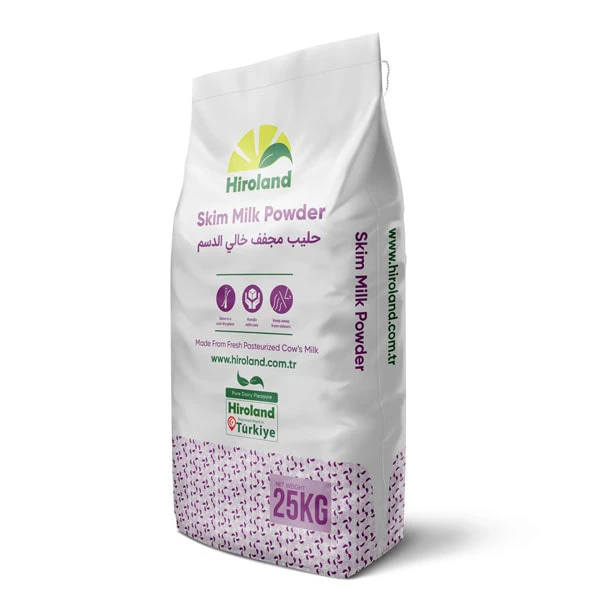
• Benefits:
o Gently spray-dried and almost non-denatured
o Fine milk flavor, e.g., for chocolate and confectionery products
o Excellent solubility and processing characteristics
o Delivers fine pores, a tender crumb, and a softer texture of baked goods
o Stabilization and prolonged freshness of food
o Excellent foaming properties in instant beverages
o Balances the taste and improves the aroma of ready-to-use food
o Protein source in food
o Improves emulsifying properties
• Limitations: Shorter shelf life compared to high heat-treated powders; may not be suitable for all processing conditions.
Medium Heat Skim Milk Powder
Medium heat skim milk powder is subjected to moderate heat treatment, resulting in partial denaturation of proteins. This type strikes a balance between solubility and heat stability, making it versatile for various applications. The production process for medium heat skim milk powder involves heating the milk at moderate temperatures for an intermediate duration. The subsequent drying process is carefully managed to maintain the powder’s functionality while also enhancing its shelf life. Skim milk powder-MH retains a good balance of soluble and insoluble proteins, offering a moderate nutritional profile with sufficient heat stability. The gentle heating process maintains the typical fresh taste.
Applications in the Dairy Industry
• Recombination of milk
• Chocolate products and confectionery
• Baked goods and bakery premixes
• Desserts, sweet dishes, yogurt
• Ice cream
• Custard powder
• Soups, sauces, ready meals
• Sports nutrition, dietary food
• Instant beverages, coffee creamers, topping powder
Benefits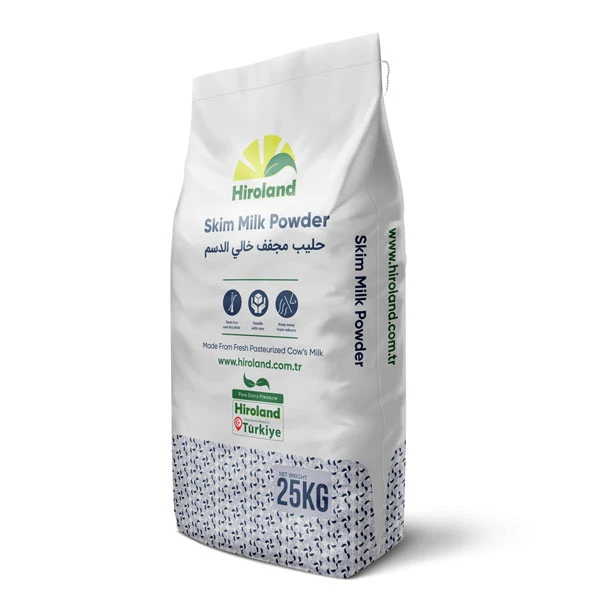
• Gently spray-dried
• Fine milk flavor, e.g., for chocolate and confectionery products
• Excellent solubility and processing characteristics
• Delivers fine pores, tender crumb, and softer texture of baked goods
• Stabilization and prolonged freshness of food
• Excellent foaming properties in instant beverages
• Balances the taste and improves the aroma of ready-to-use food
• Protein source in food
• Improves emulsifying properties
• Pure natural product without additives (Clean Label ingredient)
• Long shelf life, easy to store
High Heat Heat Stable Skim Milk Powder
High heat, heat stable skim milk powder (SMP HHHS) is processed to withstand high temperatures, making it ideal for use in food applications that require heat treatment. The production of SMP HHHS involves milk clarification, standardization, pasteurization, and evaporation, followed by heating the milk to high temperatures (above 85°C) for an extended period (usually 15-30 seconds) to denature the whey proteins and increase the heat stability of the product. SMP HHHS has several advantages over regular skim milk powder. Its high heat stability means it can withstand the high temperatures used in industrial food processing without denaturing, preserving the nutritional value and sensory qualities of the final product. It also has a longer shelf life, making it easier to store and transport. Additionally, its low moisture content makes it less susceptible to microbiological spoilage, reducing the risk of contamination.
However, there are potential drawbacks. The high-heat treatment may cause some proteins to denature, affecting texture and flavor. SMP HHHS may not be suitable for products requiring low-heat treatment, such as yogurt, due to possible undesirable flavor changes or textural issues. Its low moisture content may also affect solubility. SMP HHHS is used in various food applications, including baked goods, confectionery, processed meats, and sauces, contributing to texture, flavor, and appearance. For example, it improves the structure and crumb of baked goods and the viscosity and mouthfeel of sauces.
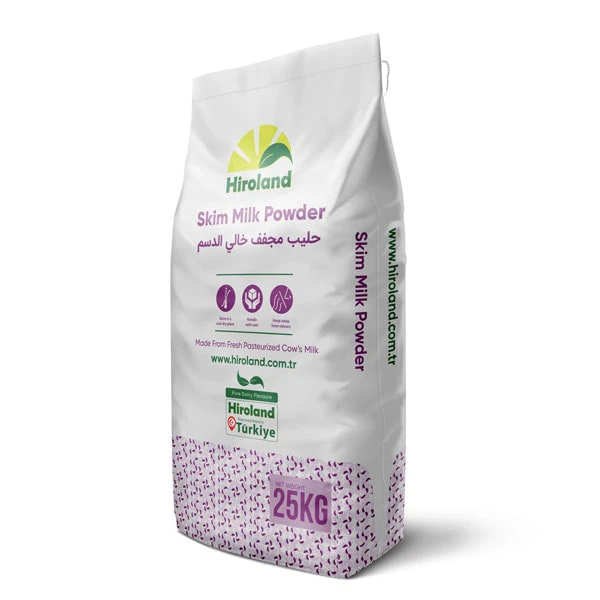
Applications in the Dairy Industry
• SMP HHHS is used primarily in the food industry, especially in applications requiring milk powder to withstand high-temperature processing.
• It is used with anhydrous milk fat or fresh frozen milk fat for recombining or unsalted butter as a fat source to make full cream recombined evaporated milk.
• It can also be used with heat-stable buttermilk powder to produce recombined evaporated milk of superior flavor or as a formulation option providing extra flexibility.
Conclusion
Skim milk powder is a cornerstone of the dairy industry, offering a range of nutritional benefits and functional properties that make it indispensable in various food applications. The level of heat treatment applied during its production—low, medium, or high—significantly influences its characteristics, from solubility and protein structure to shelf life and nutritional content.
Low heat skim milk powder is ideal for applications requiring high-quality, undenatured proteins, such as nutritional supplements and products where solubility is paramount. Medium heat skim milk powder offers a balance between solubility and heat stability, making it versatile for a broader range of food products, including baked goods and confectionery. High heat heat stable skim milk powder excels in high-temperature processing environments, such as in the production of baked goods and processed foods, where heat stability and extended shelf life are critical.
Understanding these differences allows food technologists, dairy professionals, and manufacturers to choose the appropriate type of skim milk powder to meet specific needs, ensuring optimal performance and quality in their products. As the dairy industry continues to evolve, the role of skim milk powder, tailored through precise heat treatment, will remain vital in delivering nutritious, high-quality dairy products to consumers worldwide.
For more up-to-date information from Hiroland, please refer to our Contact section.
Read More: Exploring the World of Milk Powders: A Comprehensive Comparison
Read More: Dry heat treatment of skim milk powder greatly improves the heat stability of recombined evaporated milk emulsions



